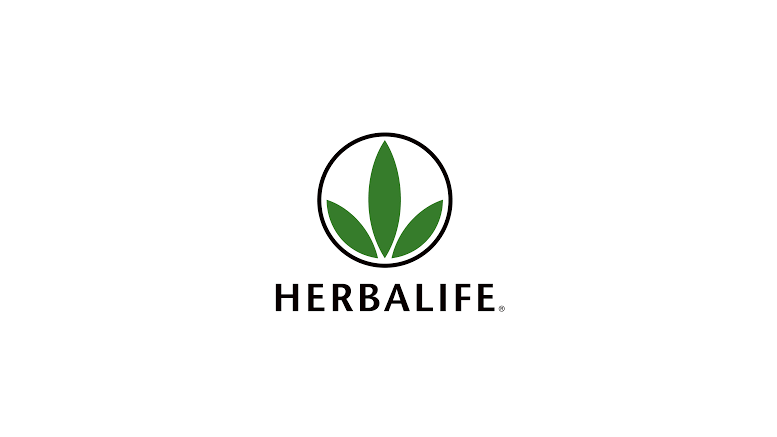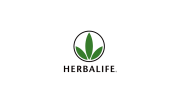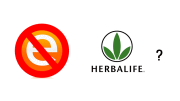Summary
- Herbalife uses volume points as a proxy for net sales, which makes it harder to estimate revenues.
- The guidance seems very conservative based on the items disclosed.
- I believe that Herbalife will report a higher than expected net income, but underwhelming revenue.
- Based on the previous quarter, I don’t think that the EPS beat will be enough to create share price appreciation.
Introduction
Herbalife’s (NYSE:HLF) struggles have been well documented. It was in May of 2012 that Bill Ackman accused the company of being a fraudulent pyramid scheme. Last year, he almost got his win. If you ask Ackman, it was indeed a win, but that is just his ego talking. The FTC finally slammed the proverbial gavel. In essence, it ruled that Herbalife was a pyramid scheme, except it didn’t call it a pyramid scheme: ‘Herbalife is going to have to start operating legitimately…’ This, in many ways, was a blessing for Herbalife.
After all, what moves did Ackman have left? It is also imaginable that Herbalife CEO Michael Johnson was thrilled to learn about Ackman’s struggles with Valeant (NYSE:VRX). At the very least, this would shift Ackman’s focus from attack dog to damage controller, and perhaps, with a bit of luck, the spiraling value of the Valeant stock would force Ackman to unwind his short position in Herbalife, which in turn would reduce the pressure on the stock. The latter didn’t happen, but it seems like the first did.
Herbalife won by most people’s standards, mine included, but it didn’t get away unscathed. The company agreed to pay a $200 million fine in order to compensate money-losing distributors. More importantly, though, the FTC set a standard dictating that incentives offered to distributors have to be tied to sales of the product to bona fide consumers. Luckily, for Herbalife, this only impacted its U.S. business, which accounts for roughly 20% of its revenue.
The U.S. business has declined by 2.4% since the ruling and this part of the business is likely to get worse from here. Still, I believe that the upcoming print will be an EPS beat, however, I’m not too sure that this will result in a share price appreciation as the last quarter seems to indicate that this is not enough.
Volume points
Herbalife uses a measure called ‘Volume Points’ as a proxy for sales trends. Personally, I have never heard of this before, but perhaps this is standard practice in the MLM industry. A quick look at Nu Skin Enterprises (NYSE:NUS) suggests otherwise. The attractiveness of volume points is clear immediately. Just read this:
“A key non-financial measure we focus on is Volume Points on a Royalty Basis, or Volume Points, which is essentially our weighted average measure of product sales volume. Volume Points, which are unaffected by exchange rates or price changes, are used by management as a proxy for sales trends because in general, excluding the impact of price changes, an increase in Volume Points in a particular geographic region or country indicates an increase in our local currency net sales while a decrease in Volume Points in a particular geographic region or country indicates a decrease in our local currency net sales. ”
Source: 10-q filing Herbalife
In essence, Volume Points is a more accurate proxy for products sold instead of total sales. This is because Volume Points doesn’t capture currency effects. This is also exactly what makes it attractive to use. Herbalife is currently being clobbered by the strong dollar, so excluding the impact of this by inventing a new metric, will make their performance look better. Of course, if we’re being completely honest with each other, this is a completely ridiculous metric to invent.
Why invent such a metric when 80% of your sales are outside the U.S.? I think I just answered my own question there. From an opportunistic standpoint, this makes sense, because the picture is painted as rosier than it in fact is. From an intellectually honest standpoint, it remains utterly ridiculous. This is not to say that the Volume Point measure was introduced yesterday. It is a metric that the company communicates with its distributors. The more Volume Points they have, the higher their ranking is. Perhaps the even bigger obvious benefit is that this metric obscures product mix, because it does not record it.
Here’s another way of explaining Volume Points:
“We assign a Volume Point value to a product when it is first introduced into a market and the value is unaffected by subsequent exchange rate and price changes. The specific number of Volume Points assigned to a product, and generally consistent across all markets, is based on a Volume Point to suggested retail price ratio for similar products. ….However, because Volume Points are a function of value rather than product type or size, they are not a reliable measure for product mix. As an example, an increase in Volume Points in a specific country or region could mean a significant increase in sales of less expensive products or a marginal increase in sales of more expensive products.”
Source: 10-q sec filing
In other words, Volume Points in essence only records the amount of money received on a currency neutral basis. Another thing to notice is that Volume Points usually aren’t adjusted after the initial introduction of the product. This could create significant differences in Volume Points versus the dollar as currency trends grow over time.
So to go from Volume Points to sales, we need to adjust for currency. The reason I needed to find out what this metric is, is that the company does not guide for sales, but rather for Volume Points. These types of shenanigans truly annoy me, because they complicate the process for no particular reason. Perhaps that is precisely the objective of these shenanigans.
Volume Points guidance
Let’s look at the Volume Points guidance. For the record: I have a hard time saying that without chuckling. The company is guiding for EPS in the range $0.90 to $1.10, which seems conservative since they reported an EPS of $1.01 in the third quarter. The Volume Point’s guidance (chuckle) is in the range of a quarter-over-quarter decline of 1.5% to a growth of 2.5%. This doesn’t tell us much. In my country, we have a saying that roughly translates to “Could freeze, could thaw.” The guidance seems similar to this saying. So let’s apply ourselves and figure this out. As we read one, we find a useful statement:
“For full year 2016, we estimate a range of 4.5% to 5.5% growth per volume point.”
Keep in mind that the full year guidance naturally includes the 4Q16 guidance. Let’s work out what this full year guidance implies. We learn that the nine months ended September 2016 recorded a 6.5% Volume Point growth. So, this must mean that the actual guidance for 4Q16 is -1% to -2% decline in Volume Points. If the FY2016 guidance is to not contradict with the 4Q16 guidance, the expectation is likely a quarter-over-quarter decline of 1% to 1.5%.
In other words, the revenue guidance will result in an adjusted non-GAAP earnings per share of $1.17 to $1.16. The adjusted EPS is the EPS excluding the currency fluctuation. I do this because it is common practice for the company and the sell-side analysts following the company. In other words, a meet or beat will be based on this currency neutral number.
Management conservative or purposely under-promising?
This is a curious outcome, because management specifically guides for an adjusted EPS of $0.80 to $1. So either my math is wrong, or management is purposely under-promising. I’m not the only one surprised by this. Here’s a conversation between William Leach, an analyst, and John G. DeSimone, the CFO, during the Q&A:
William Leach – Tidal Bore Capital Advisors LP.
…hi – on the guidance. If you look at the midpoint of the currency-neutral guidance, it suggests EPS will be down 14% fourth quarter and grow only 4% next year. And you just posted 11% currency neutral gain for the third quarter. So why would you expect things to slow down so much? Are you just being conservative?
John G. DeSimone – Herbalife Ltd.
Well, you got currency neutral is $0.12, so that’s $0.92 (37:47) midpoint, so you’ve got little bit higher expenses in Q4 this year than we had a year ago and that’s really all that strikes me as an impact. We have $0.03 of FTC ongoing costs. So that’s $0.03 of it. We have $0.04 from a tax rate. So if you look at the tax rate guidance, it’s $0.04 higher than a year ago. We have negative mix of around $0.04 in Q4, and then just some run rate on expenses.
William Leach – Tidal Bore Capital Advisors LP.
Okay, seems conservative to me. Thank you.
The analyst and I differ in our currency neutral estimate ($1.19 to $1.20 versus my $1.17 to $1.16), but we’re still reaching a similar conclusion: The guidance seems rather conservative based on other items disclosed. The CFO proceeds to add some adjustments, but if you look closely, he’s actually avoiding the question. The analyst is specifically asking about the currency neutral effect. So there’s no reason to confess the -$0.12 currency effect. If we take all the other adjustments at face value, we need to subtract $0.11 from our adjusted EPS to reach an EPS guidance of $1.06 to $1.05. This is higher than Wall Street’s guidance of $0.97.
Tax rate and final thoughts
Another thing I’m having trouble with is reconciling the tax rate. The CFO claims that the tax rate will add another $0.04 in expenses, but while giving his presentation, he guides for a 25% to 28% tax rate in 4Q16 and a full year effective tax rate of 28% to 30%. The tax rate for the first nine months was 30.6%, so the tax rate can’t possibly add an expense. So if I add that back, my adjusted EPS estimate becomes $1.10 to $1.09, and including the currency effect, my EPS estimate becomes $0.98 to $0.97.
Based on my calculations, I believe that management will at least report in-line, but that it will very likely beat the estimates in terms of EPS. I believe that the revenue will be a bit underwhelming based on the guidance given. The troublesome part is that I do not know whether a beat will result in a share price appreciation, as the last earnings report showed that an EPS beat was not enough. I don’t think that management will produce numbers that will result in a share price appreciation.
Article Source: SeekingAlpha.com





Be the first to comment on "Herbalife Is Very Likely To Widely Beat EPS Estimates"